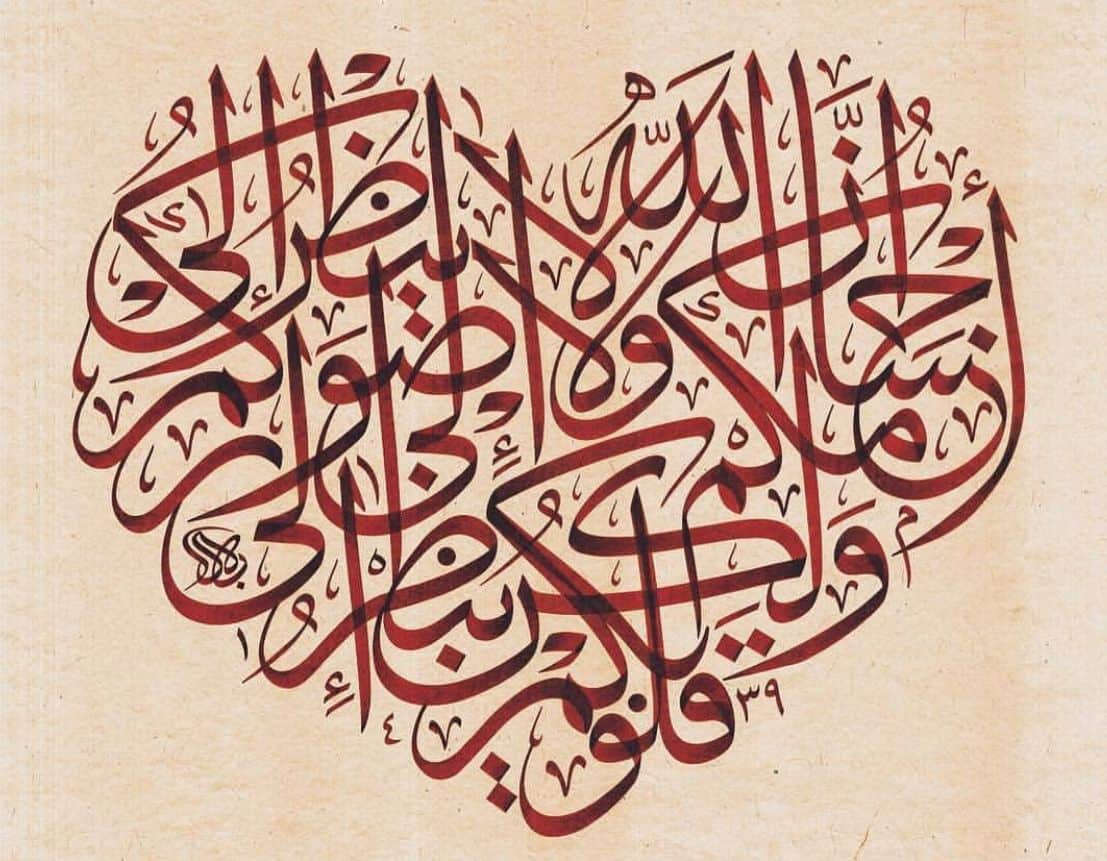Arabic calligraphy, also called Islamic calligraphy, is the artistic practice of writing in the Arabic alphabet “Alharf Alarabi”. Calligraphy is known mainly in countries sharing a common Islamic and Arabic cultural heritage. This art form is based on the Arabic letters, which all Muslims have long used in their respective languages. They used it to write mainly the words of God, “the Holy Quran“.
Calligraphy is particularly revered in Islamic art, as it was the primary means of preserving the Qur’an. Suspicion of figurative art as idolatrous led to calligraphy and abstract representations becoming an important form of artistic expression in Islamic and Arab cultures, especially in religious contexts. The work of calligraphers was collected and appreciated. Contemporary artists in the Islamic world draw on the heritage of calligraphy to use calligraphic inscriptions or abstractions in their artwork.
Arabic fonts
The Northern Arabic script, which eventually came to dominate and become the Arabic manuscript of the Qur’an, is explicitly about the “Nabataean” font derived from the Aramaic script. Old Aramaic, the language of Jesus and the apostles, dates back to the 2nd millennium BC, and some dialects are still spoken by small groups in the Middle East.
Actions of the Arabic font still Aramaic the names of the letters of the alphabet “Alef, Jeem, Dal, Zai, Sheen, etc.. A similar graphic representation for phonetically similar letters. Connections of letters in the same word and several forms of each letter depending on its location in the word, except for letters that can not connect to the letters that come after them (Alef, Dal/Dthal, Raa/Zai, Waw). The Arabic alphabet contains 18 letter forms (but 26 alphabets); adding one, two or three points of letters with similar phonetic characteristics, we get a total of 28 letters, called “abajadiya”. These contain three long vowels, while they can add diacritical marks to indicate short vowels.
With the spread of Islam, the Arabic alphabet was adopted by several non-Arab countries to write their languages. In Iran, Arabic letters were used to write “Farsi”, with the addition of four letters to represent phonetics that did not exist in Arabic: p, ch, zh and g. The Ottoman Turks also used the Arabic alphabet until 1929 and added another letter. I have also used this alphabet to write other Turkish languages and dialects, such as “Kazakh” and “Uzbek”. Several other languages have used the Arabic alphabet at one time or another, including Urdu, Malay, Swahili, Hausa, Algerian Tribal and many others.
In its earliest primitive examples from the 5th and 6th century AD, the Arabic alphabet developed rapidly after the rise of Islam in the 7th century into a beautiful art form. The two leading families of calligraphic styles were the dry styles, generally called “kufic” and the soft cursive styles, which include “Naskhi, Thuluth, Nastaliq,” and many others.
Calligraphy in the Mosque
The art of calligraphy has arguably become the most revered form of Islamic art because Arabic script was the means of transmitting the Qur’an to the world. The holy book of Islam, “The Holy Quran,” played an essential role in the development and evolution of the Arabic language and letters, and by extension, calligraphy in the Arabic alphabet. Proverbs and complete passages of the Quran are still active sources for Arabic calligraphy.
Islamic calligraphy of the mosque can be found within and outside the mosque, usually in association with arabesque patterns. The arabesque is an Islamic art form known for its repetitive geometric shapes created beautiful decorations. These geometric shapes are often added with Arabic calligraphy written on walls and ceilings, especially inside and outside mosques.
The subject of these calligraphic writings can be derived from different sources in Islam. It can be derived from the written words of the Quran or the oral tradition concerning the words and deeds of the Islamic Prophet.
There is a beautiful harmony between the inscriptions and the functions of the mosque. The suras (specific chapters) or verses (verses) of the Holy Quran are inscribed by specific architectural elements.












